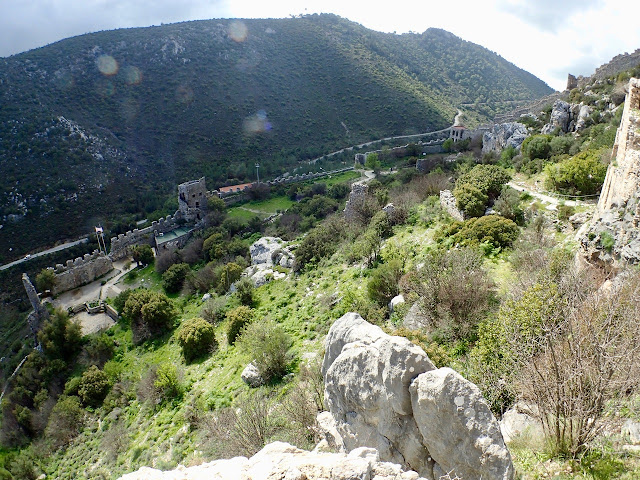 |
| Our marina, beautiful but, oh so wet and cold. |
I know commenting on a cold Turkish winter to friends/family who have endured a longer, much colder one in the Canadian north is just a bit soft. But here goes...
We chose Finike, Turkey because it was reported to have a warm and protected microclimate - warmer than Tunisia and warmer than further west along the Turkish coast. However, it was one of those winters when the locals make exclamations like, "It hasn't been so wet in thirty years!" or "Usually we play tennis every day but it is too windy!" or "It's never this cold!" It was not all that comforting to know that what we were experiencing was so unusual - more frustrating than not.
 |
| That's snow on our hatch. Looking up into a very grey sky. |
 |
| And it took awhile to melt! It looks nothing like the piles in Toronto but their is no insulated house with central heating to cozy up in. Our fibreglass home sits in cold water. |
Cold temperatures with copious precipitation is not pleasant when you live on a sailboat. Especially one with 110 volts in a land with 220. We ran our tiny, anemic space heater 24 hr a day purchased when Florida was chilly but we couldn't invest in a big, blasting heater purchased in Turkey. Luckily, our American friends had an extra larger heater that they kindly lent us. We could sit in the salon bundled in multiple layers with some comfort. And bed was laden with four blankets.
 |
| Storms with south winds brought enormous waves which crashed on the marina mole and kicked up the sand to make a muddy sea. |
 |
| Finike Marina has a very protected harbour which did prove to be important during these southern storms. Also an incredibly diligent staff who cruise the docks on bikes in all weather to check boat lines and furled sails many times a day and through each night. |
The cold would have been okay, if the skies had been blue a little more often. But instead of the - reportedly - usual rainy day followed by three or four days of sunshine, it was the other way around. Sadly, our explorations in Turkey were, therefore, limited - we are fair weather explorers. Although we loved the Turkey we saw, we didn't see enough of it.
But the winter, along with other things, did make us solidify our plans.
When we arrived in the Med, we were overwhelmed by the depth of history, the stunning natural beauty and the variety of cultures. We could, and many cruisers do, spend years here. The vast majority though are seasonal cruisers - going to their Northern European homes in the winter! and cruising the Med in the five or six warmer months. Many return home again over the scorching and crowded summer and only cruise in spring and fall. But we have chosen to be liveaboards, at least for the next few years.
 |
| We were surrounded by spectacular snowcapped mountains. |
 |
| Very beautiful. The snow got deeper and deeper... |
 |
| And crept closer and closer. |
And so, we have decided to head west, making the 2019 sailing season our last in the Med. We will sail to the Canaries, Cape Verde and then recross the Atlantic to land somewhere in the Caribbean. From there are timing is loose but our intent is to continue slowly west.
Besides the winter weather, the unpredictable roaring or nonexistent wind and the summer crowds, we are reluctant to leave. The Mediterranean has so much to offer! and we feel we have barely scratched the surface. I'm sure we'll hanker for a castle or cathedral or two as we head west. But for now, we're excited about moving on.







































































